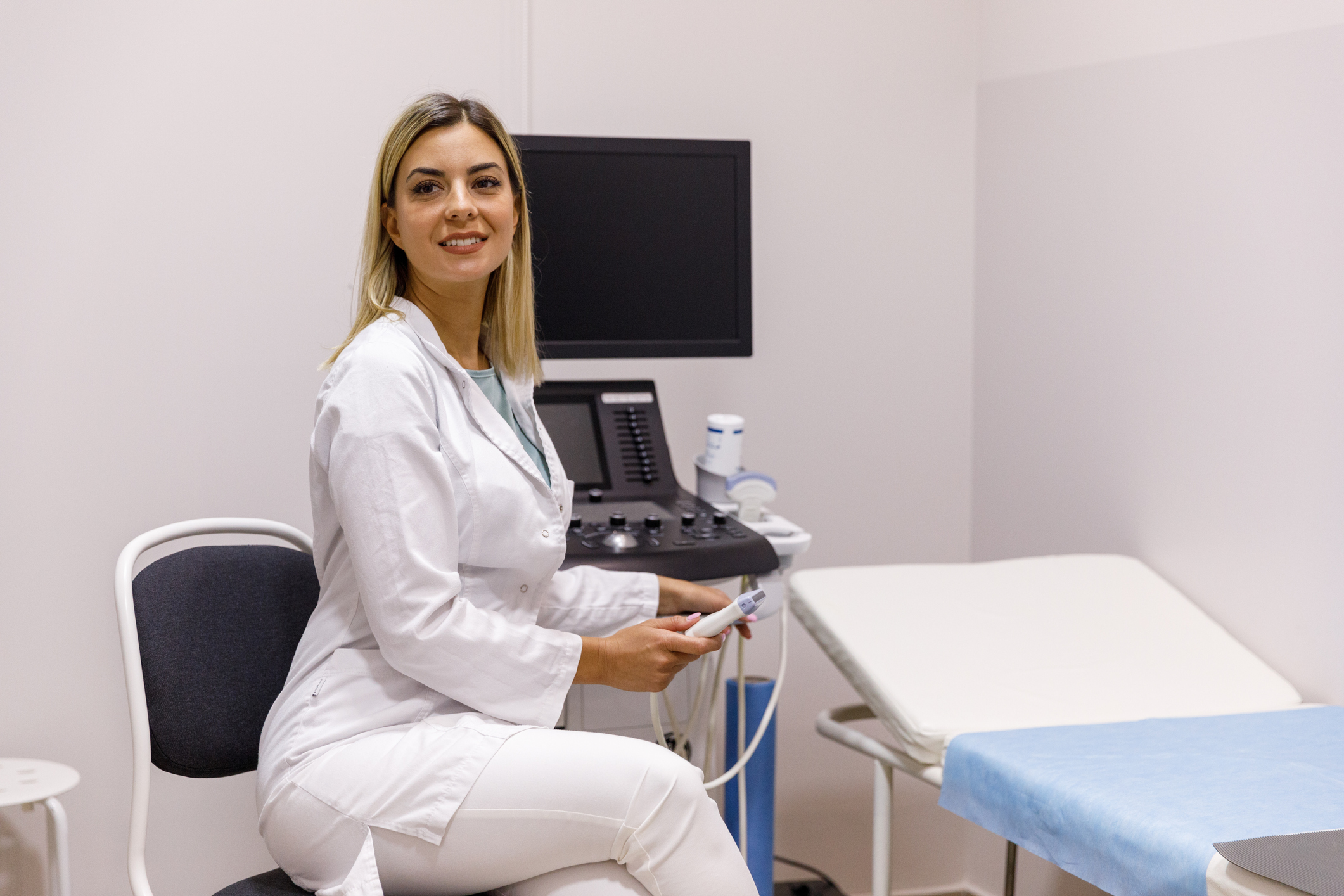Sharing is caring!
Today, there is a huge demand for sonographers. Surely, sonographer jobs are multiplying as the U.S. population ages. First-line professionals are needed to monitor musculoskeletal diseases, and serious illnesses like cancer, and heart conditions.
Furthermore, the BLS predicts that the number of jobs in sonography will increase by 10% from 2021 to 2031, a higher rate than the average for all occupations.
There is much to learn about the subject, particularly if you’re considering specializing in sonography.
Types of Sonographers
Here are different types of sonographers and some details on what they do:
1. Diagnostic Cardiovascular Sonographer
Sonography is a tool that diagnostic cardiovascular sonographers use to assist physicians in the diagnosis of diseases that might damage the heart and cardiovascular system. Because they frequently use echocardiograms to capture diagnostic images of patients’ internal systems, diagnostic cardiovascular sonographers are also known as cardiac sonographers or echocardiographers by some specialists. Furthermore, diagnostic cardiovascular sonographers frequently evaluate the heart’s anatomy in 2D and 3D pictures when taking diagnostic images to look for abnormalities such as blockages or degeneration. Following that, doctors are able to prescribe treatments and diagnose problems using this knowledge.
Diagnostic cardiovascular sonographers typically work in hospitals, although they also find employment in clinics or doctor’s offices with on-staff heart experts.
2. Obstetric Sonographer
Obstetric sonographers specialize in taking images of fetuses during pregnancy. When they take sonograms, obstetric sonographers evaluate the growth of a fetus and keep track of its development. This helps physicians develop health plans for mothers to implement throughout pregnancy. Moreover, obstetric sonographers take images of the uterus to determine whether someone is pregnant and identify a potential due date for the baby’s arrival.
Obstetric sonographers most commonly work in hospitals and facilities that have maternity wards. However, they also find jobs in outpatient care centers, private practices, and medical and diagnostic laboratories.
3. Abdominal Sonographer
Abdominal sonographers use sonography equipment to capture diagnostic images of the internal organs located inside the abdomen. Hospitals, outpatient centers, and other healthcare settings treating patients with abdominal disorders employ sonographers. Most abdominal sonographers receive in-depth training in the various abdominal systems. They specialize in the abdomen, which enables them to assist doctors in accurately diagnosing illnesses inside them. Furthermore, abdominal sonographers examine for anomalies like tumors, tissue damage, or stones while capturing photos of patients’ abdominal regions.
An abdominal sonographer might take pictures of the following areas: the abdominal aorta, kidneys, pancreas, gallbladder, spleen, and liver.
4. Musculoskeletal Sonographer
Muscles and skeletal system components are imaged for diagnosis by a musculoskeletal sonographer. This applies to the patient’s entire body’s tendons, ligaments, joints, and nerves. Indeed, sonographers that specialize in the musculoskeletal system frequently use the images they capture to spot diseases that impair a patient’s mobility by affecting their joints, muscles, and bones. Additionally, musculoskeletal sonographers commonly work in hospitals, emergency rooms, and other healthcare institutions that treat patients suffering from traumatic injuries.
Musculoskeletal sonographers look out for the following conditions when performing their work: bone fractures, sprains, tense muscles or objects, inflammation, strains, arthritis, hernias and cysts.
5. Neurosonology Sonographer
In addition to ultrasound and sonogram technology, a neurosonology sonographer uses specialized tools to capture diagnostic images of the brain. The transcranial doppler (TCD) machine is the instrument that neurosonology sonographers use to acquire internal images of the brain. It assists doctors in the diagnosis of diseases such as cerebral palsy, encephalitis, and Down syndrome. In order to look for anomalies like strokes, epilepsy, aneurysms, and brain tumors, neurosonologists also utilize a TCD machine to obtain images of patients’ spinal columns and neurological systems.
The majority of neurosonology sonographers operate in hospitals and diagnostic testing facilities with TCD machines because of the specific equipment their line of work needs.
6. Breast Sonographer
After a patient has an abnormal mammography or examination, breast sonographers specialize in capturing diagnostic images of the breast and surrounding tissue. Their work often entails examining the breasts, surrounding tissue, and lymph nodes to look for any anomalies that indicate a growing medical concern. For example, lumps, cysts, and tumors are a few anomalies that breast sonographers frequently check for in patients. Since the images they collect reveal regions that point to potential malignant growth, breast sonographers also aid doctors and specialists in the diagnosis of cancer.
Breast sonographers typically find employment at hospitals, oncology centers, or women’s health centers because their work focuses primarily on imaging breasts.
Overall, a sonographer job is fulfilling and gratifying. It allows you to develop professionally while assisting people with their medical needs. Moreover, with the development of new imaging technology, less harmful ultrasound is replacing invasive imaging procedures. No matter which type of sonographer you choose to become, there is a place for you.
Are you considering a career in healthcare? Particularly in assessing and diagnosing medical conditions. We’ve got the job for you.
About Phaxis
Founded in 2002, Phaxis is now one of the country’s leading recruitment firms. Specializing in healthcare, information technology, accounting, financial services recruitment, office support, legal, HR, and marketing. Phaxis partners with highly qualified talent and top employers to create rewarding career opportunities that result in long-term success for candidates and employers.
Visit us at www.phaxis.com.




